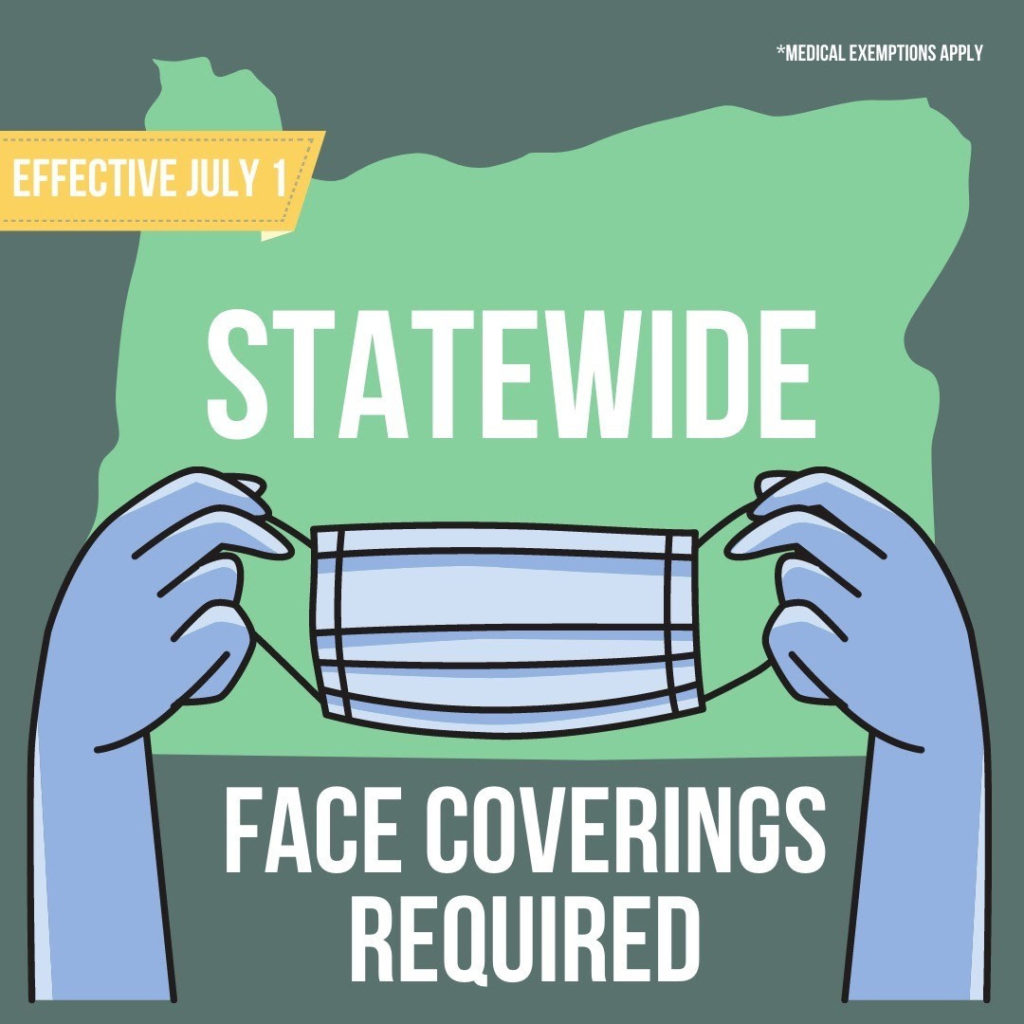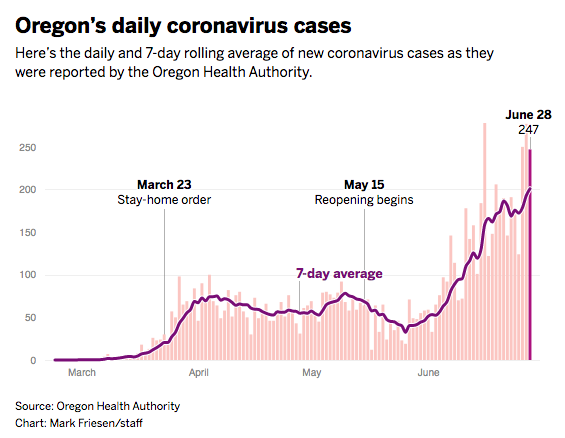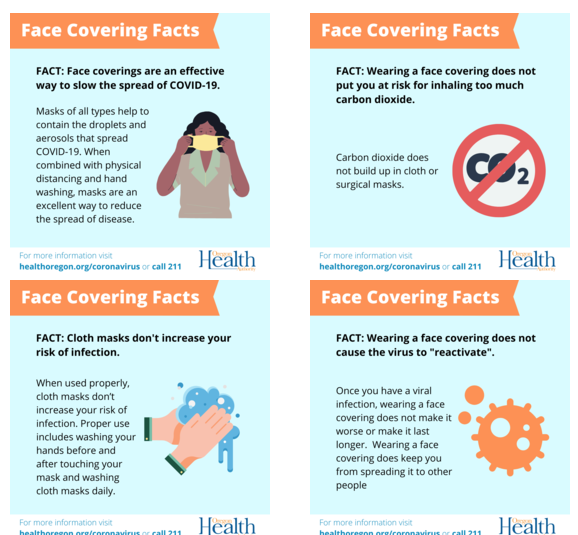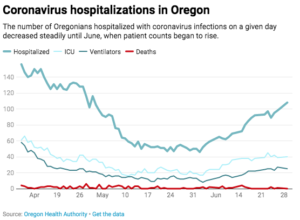
By GARY A. WARNER/The Oregon Capital Bureau
Everyone in Oregon will be required to wear masks or face coverings in indoor public spaces starting Wednesday to help curb the spread of COVID-19, Gov. Kate Brown announced Monday.
“Over the last month, we have seen the disease spread at an alarming rate in both urban and rural counties,” Brown said in a statement announcing the mask order.

While state officials expected to see an increase in positive cases following the lifting of restrictions “reopening” the state, the rate of increase comes as the state heads into the July 4th holiday weekend, which Brown called “a critical point” in the pandemic.
The mandate is already required in eight counties including Lincoln, Marion and Polk counties and the three-county Portland metropolitan area. Clatsop County asked to be added to the group last week as well. Brown’s order now aligns Oregon with neighboring California, which has ordered masks be worn indoors.
However, Lincoln County has a stricter directive from its health officer mandating that people use face coverings in outdoor settings when they cannot maintain a distance of six feet from each other. That directive is stricter than the governor’s and takes precedence over the governor’s order.
Oregon Occupational Safety and Health will take the lead in enforcing face covering requirements, along with other state and local agencies, Brown said. The governor has repeatedly said she did not want to use a heavy hand in enforcement, hoping that Oregonians would voluntarily follow the face covering edicts.

“Modeling from the Oregon Health Authority shows that if we don’t take further action to reduce the spread of the disease, our hospitals could be overwhelmed by new COVID-19 cases and hospitalizations within weeks,” Brown said in her statement. “The choices every single one of us make in the coming days matter.”
Even top national health experts are unsure that Americans will heed the advice.
Dr. Anthony Fauci, the top U.S. infectious-disease expert, said this week that he was concerned at attitudes in the country that have made wearing masks into a political issue.
“One of the problems we face in the United States is that unfortunately, there is a combination of an anti-science bias that people are — for reasons that sometimes are, you know, inconceivable and not understandable — they just don’t believe science and they don’t believe authority,” Fauci said on a podcast from the U.S. Department of Health and Human Services.
Fauci stopped short of directly criticizing President Donald Trump, who has refused to wear a mask in public despite pleas from public health agencies that he model the behavior they say is needed to defeat the virus.

The Oregon Health Authority has used forecasts provided by the Institute of Disease Modeling to create a trio of scenarios of the growth of infections: optimistic, moderate and pessimistic.
In recent days, state epidemiologists have said they were aiming to stay within the moderate scenario in which COVID-19 cases would rise to about 900 a day. Daily hospitalizations would go to 27 per day.
The worry has been that the state would trend toward the worst case scenario — “pessimistic” — in which new cases could spike to more than 4,800 per day and 82 new patients would need hospitalization each day.
The optimistic scenario saw cases remain at about 180 new daily cases. But Oregon has already passed 200 cases in a day, with all but one of the highest number of daily cases occurring in the past two weeks.

Oregon cases rising
On Monday the Oregon Health Authority reported 146 new COVID-19 cases, bringing the state total to 8,485. Two more people died, the agency said, bringing the total to 204.
There were no new cases reported for Lincoln County.

Oregon joins a growing number of states that are backtracking on “reopening” amid a surge of new COVID-19 cases. Only two states — Rhode Island and Connecticut — have not shown a rise in coronavirus infections in the past week, according to the Centers for Disease Control. Florida, Texas and Arizona — three states that quickly reopened businesses in recent weeks — are showing the sharpest increases.
Oregon health officials have also been concerned about the rise in cases that cannot be traced to a known source. This is an indicator of “community spread,” in which the virus is spreading from casual contacts among numerous people.
Oregon’s overall positive testing rate is 4.3 percent of tests performed. That’s much lower than the national average of 9 percent. But with the rate rising, state officials decided Monday it was time to act.
Less than 1 percent of those under 50 who are infected have died from the virus. Fatalities increase rapidly with age, with 20 percent who are 75 and older dying.
The Oregon Capital Bureau in Salem is staffed by reporters from EO Media and Pamplin Media Group and provides state government and political news to their newspapers and media around Oregon, including YachatsNews.com



